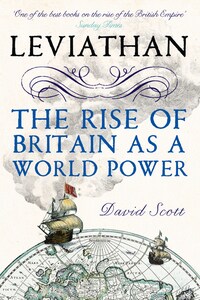1. King Henry VII by unknown Flemish artist, 1505 (© National Portrait Gallery, London. NPG 416)
2. From The Image of Irelande by John Derrick, 1581 (Courtesy Edinburgh University Library)
3. Armada playing cards, 1588 (© National Maritime Museum, Greenwich, London. PU0214; PU0183; PU0181; PU0179)
4. From Narratio regionum indicarum per Hispanos quosdam devastatarum verissima, 1598 (Courtesy Bibliothèque Nationale de France. BNF C43328)
5. Equestrian portrait of Charles I by Anthony Van Dyck, 1633 (Supplied by Royal Collection Trust / © HM Queen Elizabeth II 2013. RCIN 405322)
6. The Tiger by William Van de Velde the elder, c.1681 (© National Maritime Museum, Greenwich, London. PZ7304)
7. View of the beheading of Charles I by unknown artist (Private Collection / © Look and Learn / Peter Jackson Collection / The Bridgeman Art Library)
8. East India Company Ships at Deptford by unknown artist, c.1660 (© National Maritime Museum, Greenwich, London. BHC1873)
9. Duke’s plan of New York, 1664 (© The British Library Board. Maps K.Top.CXXI.35. 008318)
10. Engraving of London before the Great Fire by Pieter Hendricksz Schut, mid-17th century (Courtesy Guildhall Library, City of London)
11. A Representation of the Popish Plot in 29 figures, c.1678 (© The Trustees of the British Museum. All rights reserved. 1871,1209.6512)
12. The Common wealth ruleing with a standing Army, 1683 (© The Trustees of the British Museum. All rights reserved. 1868,0808.3297)
13. Emblematical Print on the South Sea Scheme by William Hogarth, 1721
14. Excise in Triumph, c.1733 (Courtesy of The Lewis Walpole Library, Yale University)
15. Idol-Worship or The Way to Preferment, 1740 (Courtesy of The Lewis Walpole Library, Yale University)
16. The Lyon in Love, 1738 (Courtesy of The Lewis Walpole Library, Yale University)
17. O the Roast Beef of Old England (The Gate of Calais) by William Hogarth, 1748, engraved by C. Mosley (Courtesy of The Lewis Walpole Library, Yale University)
18. Beer Street by William Hogarth, 1751
19. Gin Lane by William Hogarth, 1751
20. The Abolition of the Slave Trade by Isaac Cruikshank, 1792 (Courtesy of The Lewis Walpole Library, Yale University)
21. Slaves processing sugar cane, c.1667–71 (© The British Library Board. C13236-18)
22. Fort St George on the Coromandel Coast by Jan van Ryne, 1754 (© National Maritime Museum, Greenwich, London. PU1845)
23. The Ballance, or The American’s Triumphant, 1766 (Courtesy of The Lewis Walpole Library, Yale University)
24. The Mob destroying & Setting Fire to the Kings Bench Prison & House of Correction in St Georges Fields, 1780 (Courtesy of The Lewis Walpole Library, Yale University)
25. The Free-born Briton or A Perspective of Taxation, 1786 (Courtesy of The Lewis Walpole Library, Yale University)
While every effort has been made to trace the owners of copyright material reproduced herein, the publishers would like to apologise for any omissions and would be pleased to incorporate missing acknowledgements in future editions.








